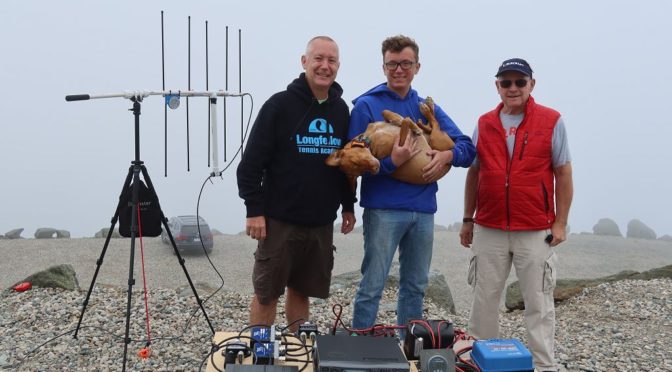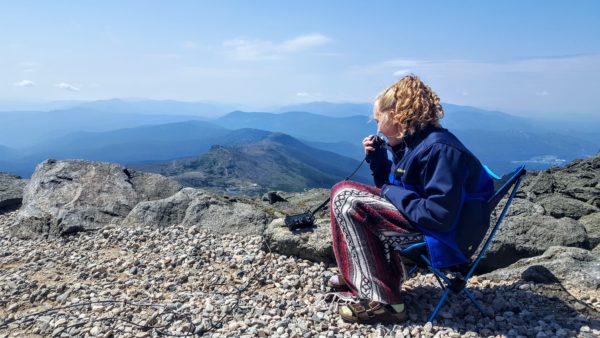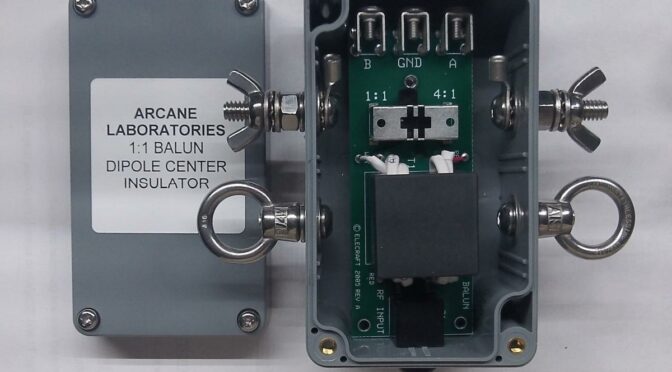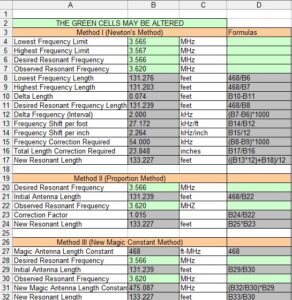Next week is the Northeast HamXposition 2022 in Marlborough, Massachusetts. Nashua Area Radio Society will host our exhibits on ham radio again this year. We presented our display at previous HamXpositions and at other venues such as NEAR-Fest.

Here is an example from one of our past presentations.

Preparation and Testing
Our displays include much more than the basic trifold display board. We also include relevant items that are in the topic of each display and many displays have videos running with more details to inform and entertain our guests.
A few of us met last week to test out all of the video display components of our exhibit at Fred, AB1OC’s and Anita, AB1QB’s QTH. We will have 6 video loops running in our displays this year. All are running from customized Raspberry Pi’s which are all networked together and can be controlled from a central PC for ease of management. Alan, KC1PWB is working here to prepare one of the displays for testing.

Here, Anita and Fred are testing the Flex Maestro we will use as our live demonstration radio at the event. It, along with the Raspberry Pi’s are all hard wired to the Network Pod seen on the right. Our testing in advance will make setup much easier on the day of the event. We did encounter some issues during testing and were able to take advantage having full access to all tools needed to troubleshoot and remediate the issues without any time pressure to get it done at the last minute.

Tasks
As is often the case, there are many tasks to manage behind the scenes before we have our first visitors come to see our exhibits. NARS has done this before and we have a good idea of how to manage things. Here is a high-level breakdown of some of the major tasks
- Update Displays
- Volunteer’s assignments
- Plan Layout
- Create Packing List
- Transportation to HamXposition
- Setup
- Operation
- Breakdown
- Transportation from HamXposition

Many of us have pickup trucks and two of them plus a car is enough to handle transporting our exhibit.
Current Displays
- Nashua Area Radio Society Information
- Get On the Air Work the World
- Kit Building / Raspberry Pi
- Field Day and Emergency Communications
- Satellite Communications
- High Altitude Balloons
- Fox Hunt
- SOTA/POTA
- Morse Code
Some of our displays were showing a bit of age and those have been updated and refreshed by Anita, AB1QB for this year. This is what part of our exhibit at last year’s HamXposition looked like last year right before it opened.

Come and Visit
We are very proud of our exhibit. It is the result of much effort over the years and is an excellent way for us to share our hobby with other people, whether they be hams or not. More importantly, I am even prouder of the enthusiasm and support of this project from our member volunteers who will be guides during the event and gave their time and energy to sharing our mutual love for this hobby.

I look forward to welcoming you to our exhibit at HamXposition this year.





